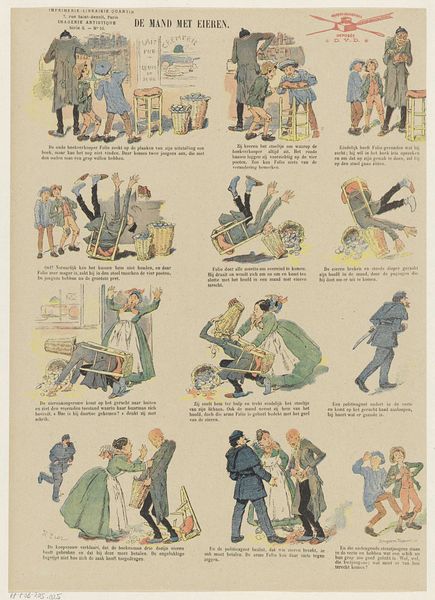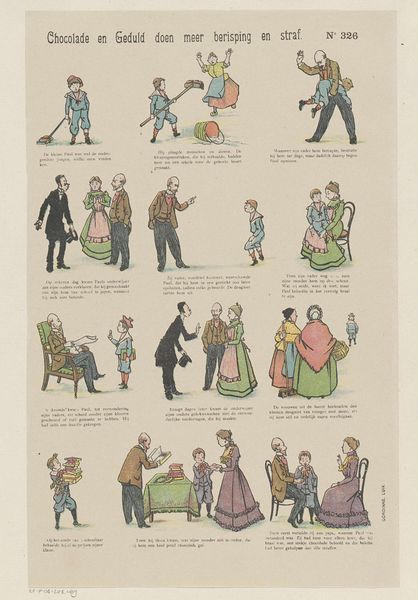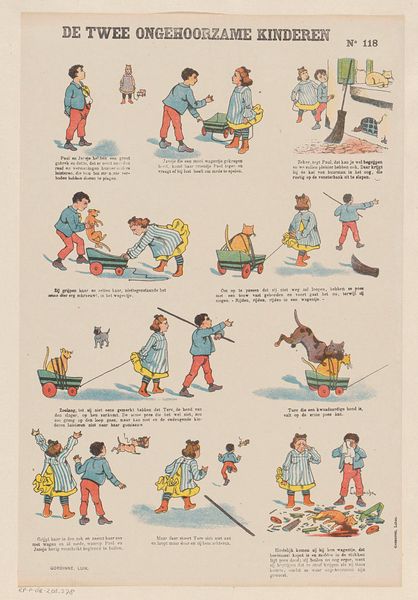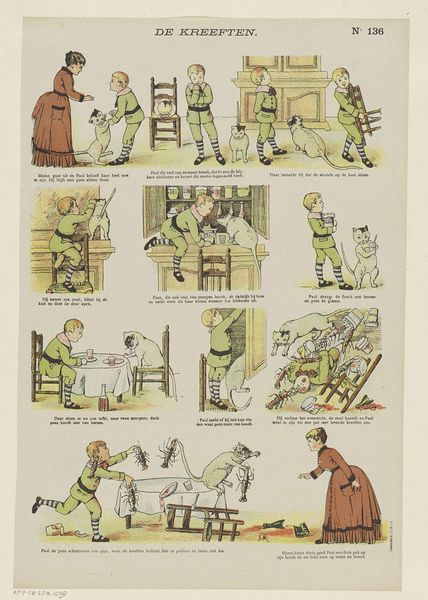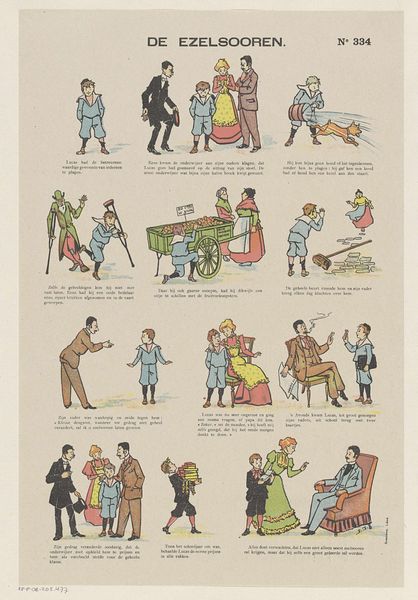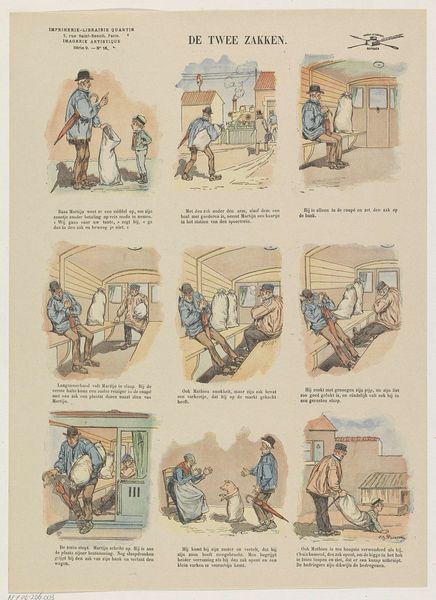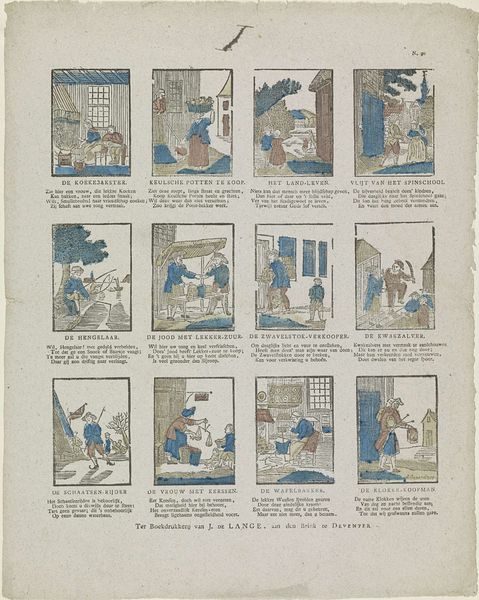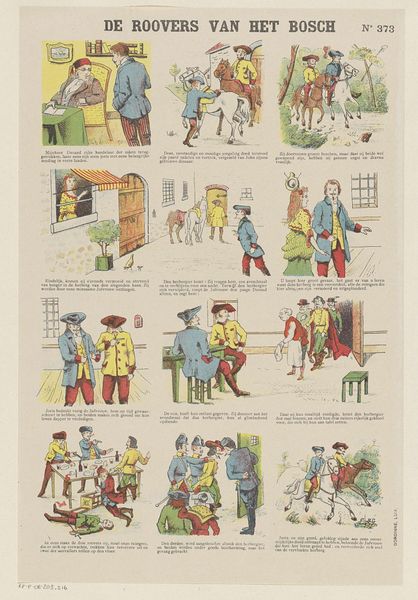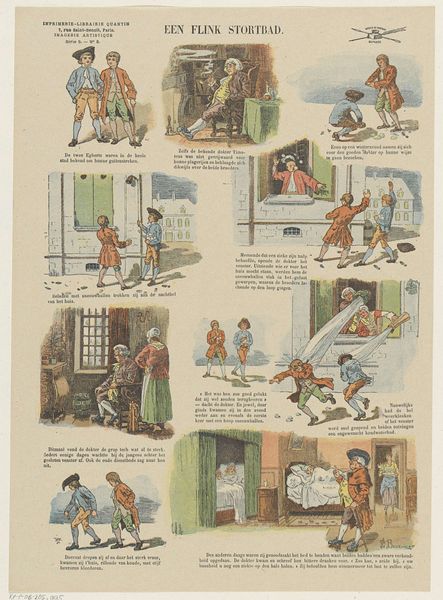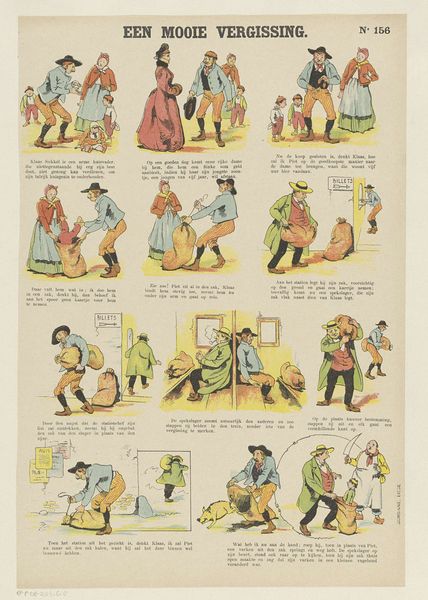
Dimensions: height 369 mm, width 266 mm
Copyright: Rijks Museum: Open Domain
Curator: Welcome! Today, we're looking at Firmin Bouisset's "De woedende portier", created sometime between 1876 and 1890. It's a charming print that seems to tell a whole story in little vignettes. Editor: Charming is one word! My immediate reaction is how expressive it is, especially regarding class tensions. The progression feels chaotic but purposeful. The rough-and-tumble composition just underlines the subject matter. Curator: Precisely! It captures a whole range of societal concerns. Note how Bouisset utilizes a comic strip-like approach to represent the class conflict as a constant game of antagonism. The gatekeeper figure clearly struggles against the children; his anger seems performative given that it is a folk tale. Editor: Good point about performance; but even more relevant is the means of reproduction here - the printmaking itself allows distribution to the masses. Think of the paper stock, cheap ink, and what kind of impact it had in a time with limited print access for these messages to actually circulate. Curator: It definitely underscores questions around power structures in a period of intense industrial and societal transformation. There is also the caricature nature. The representation leans on negative stereotyping against gatekeepers while using innocent children to amplify how these figures may use whatever powers they have available to maintain dominance. Editor: And by framing all of it through material means like caricature – where bodies are distorted or exaggerated based on social standing – Bouisset is challenging established hierarchies that typically separate 'high' from 'low' artistic practices. The print is very telling of consumption. Curator: Indeed, by focusing on a narrative centered around working-class tension while also incorporating stylistic components like ukiyo-e, we begin connecting issues relating to representation in social strata across geographies as linked struggles—particularly regarding issues of the child, innocence, play, labor. Editor: In the end, by emphasizing these mass production materials coupled with the depiction, Bouisset not only conveys some form of tension in labour processes of that time but offers perspectives related consumption amongst vastly different economic groups in unique manners given limited forms to exchange culture broadly back then compared today. Curator: An accessible form telling poignant narratives… Editor: With enduring resonance.
Comments
No comments
Be the first to comment and join the conversation on the ultimate creative platform.


